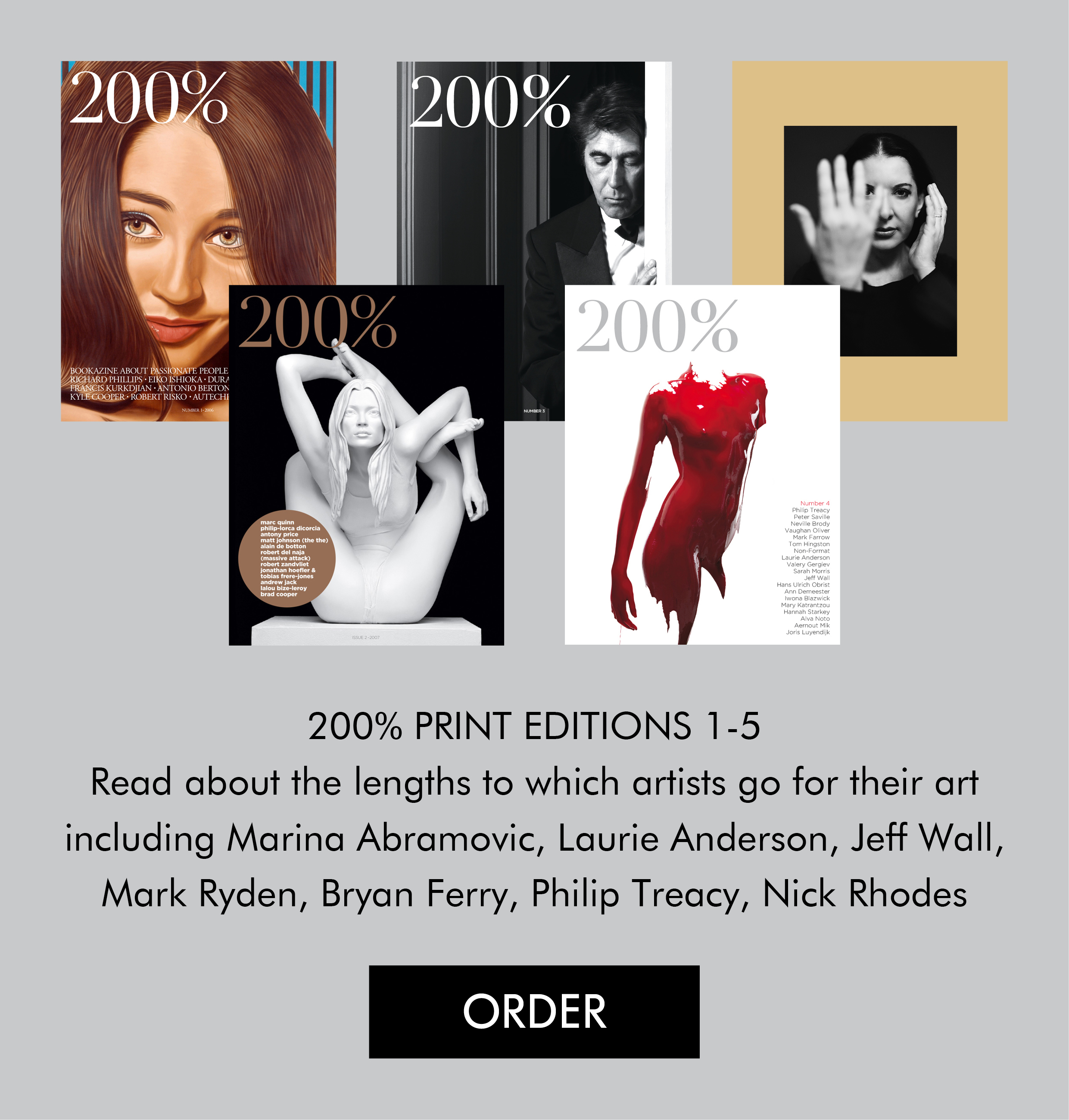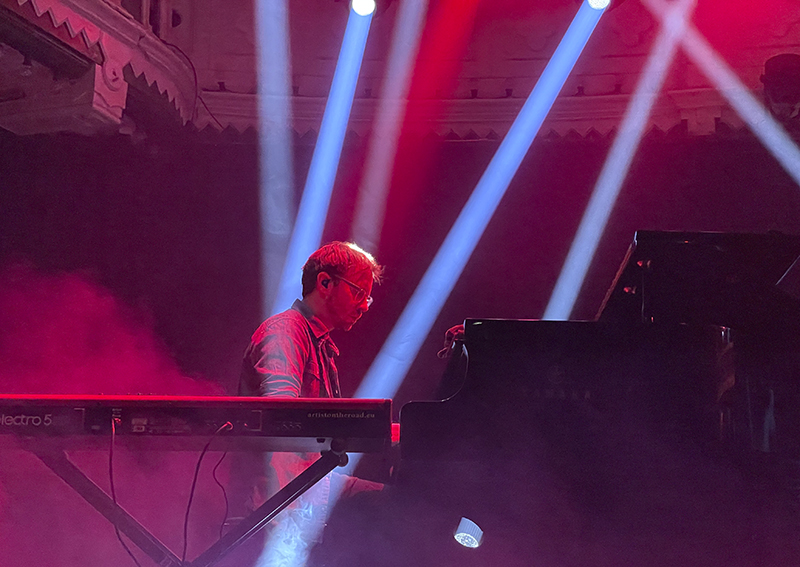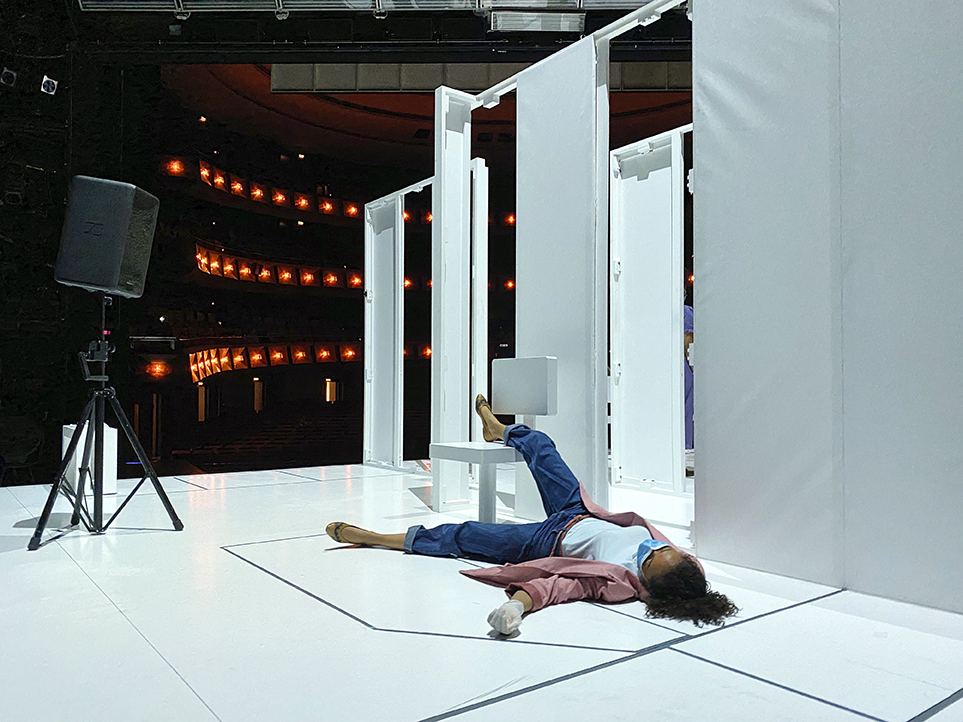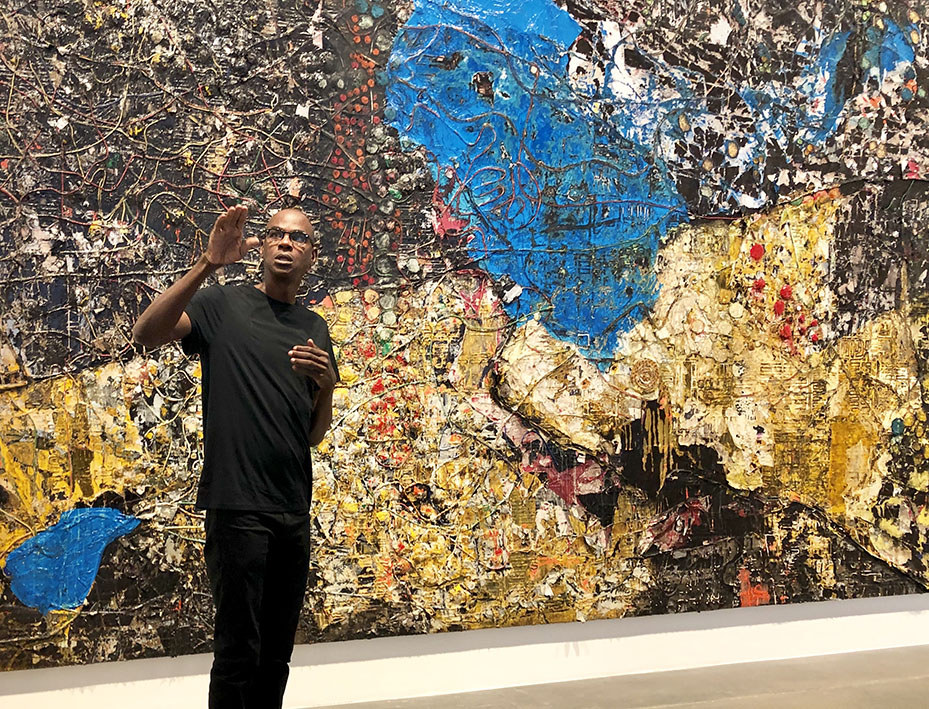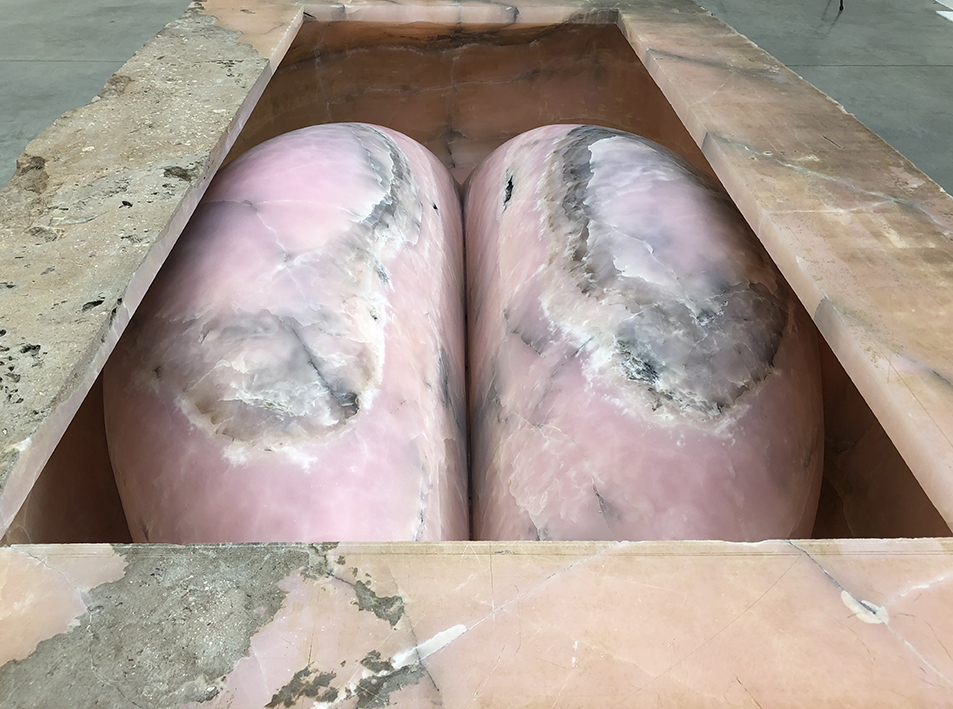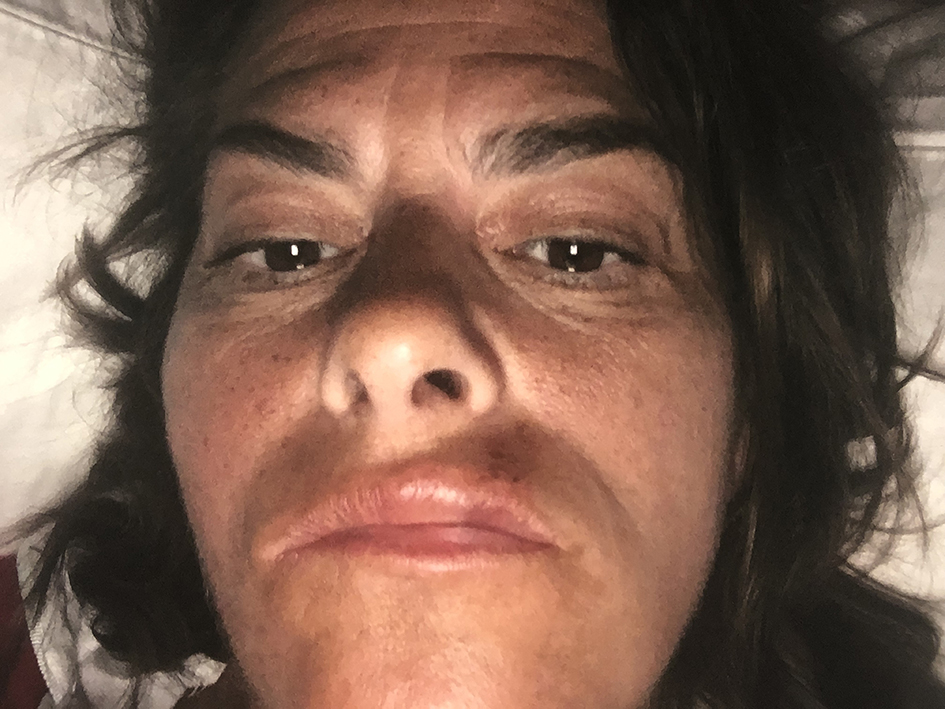 “There is a good and a bad thing about me: I never give up,” says the gallerist Pilar Ordovas half way through our conversation. “Some things take a long time, but when I really believe in something I really think when you work hard enough, you’ll get that”.
And she got it: Rembrandt’s ‘Self Portrait with Beret’, loaned from the Musée Granet,the portrait Ordovas needed for her inaugural exhibition, ‘Rembrandt-Bacon: ‘Irrational Marks’, when she opened her Mayfair Gallery in October 2011. A remarkable and wonderful exhibition that, for the first time, explored the connections and influences of Rembrandt’s late self-portraits on Francis Bacon’s own self-portraits.
All three exhibitions that Ordovas has hosted at her gallery have one aspect in common: ambition. They have taken years of preparation, have been extensively researched and offer something unique that hasn’t been done before, for example her current show ‘Calder in India’, which reunites nine works that the artist Alexander Calder created during his time in India in 1955.
200% met with the charming (her looks were once accurately described as the ‘Spanish Rebecca Hall’) and driven, Pilar Ordovas, to discuss the opening of her own gallery; why she programs mainly historical exhibitions; her idea to program one-off projects by contemporary artists; her ambition to make the art market more transparent; her professional relationship with Lucian Freud; and why, in times of austerity, the prices for art works are still increasing.
200%: How did you manage to persuade the Musée Granet to loan their most important work, Rembrandt’s ‘Self Portrait with Beret’, (ca 1659) to a brand new gallery?
PO: It took four months, and several visits to the Museum and from the Museum to my gallery. I had the advantage that my gallery was under construction, I could demonstrate that it would meet the requirements of the highest level that any museum has in terms of conservation, temperature control, etc. It also helped that my Gallery is adjacent to a police station, and that a curator, who used to work in that museum, who is a very old friend of mine, could vouch for me. That, together with being able to present what I was going to do with the show, and with the assistance of the lenders of the Francis Bacons’ who had supported me from the start when I showed them my plan, made the museum director of Musée Granet comment to me: “This is a show that I have always dreamed of doing myself, but it wasn’t feasible as I don’t have the connections with the Bacon side of things as you have”.
“There is a good and a bad thing about me: I never give up,” says the gallerist Pilar Ordovas half way through our conversation. “Some things take a long time, but when I really believe in something I really think when you work hard enough, you’ll get that”.
And she got it: Rembrandt’s ‘Self Portrait with Beret’, loaned from the Musée Granet,the portrait Ordovas needed for her inaugural exhibition, ‘Rembrandt-Bacon: ‘Irrational Marks’, when she opened her Mayfair Gallery in October 2011. A remarkable and wonderful exhibition that, for the first time, explored the connections and influences of Rembrandt’s late self-portraits on Francis Bacon’s own self-portraits.
All three exhibitions that Ordovas has hosted at her gallery have one aspect in common: ambition. They have taken years of preparation, have been extensively researched and offer something unique that hasn’t been done before, for example her current show ‘Calder in India’, which reunites nine works that the artist Alexander Calder created during his time in India in 1955.
200% met with the charming (her looks were once accurately described as the ‘Spanish Rebecca Hall’) and driven, Pilar Ordovas, to discuss the opening of her own gallery; why she programs mainly historical exhibitions; her idea to program one-off projects by contemporary artists; her ambition to make the art market more transparent; her professional relationship with Lucian Freud; and why, in times of austerity, the prices for art works are still increasing.
200%: How did you manage to persuade the Musée Granet to loan their most important work, Rembrandt’s ‘Self Portrait with Beret’, (ca 1659) to a brand new gallery?
PO: It took four months, and several visits to the Museum and from the Museum to my gallery. I had the advantage that my gallery was under construction, I could demonstrate that it would meet the requirements of the highest level that any museum has in terms of conservation, temperature control, etc. It also helped that my Gallery is adjacent to a police station, and that a curator, who used to work in that museum, who is a very old friend of mine, could vouch for me. That, together with being able to present what I was going to do with the show, and with the assistance of the lenders of the Francis Bacons’ who had supported me from the start when I showed them my plan, made the museum director of Musée Granet comment to me: “This is a show that I have always dreamed of doing myself, but it wasn’t feasible as I don’t have the connections with the Bacon side of things as you have”.
![aLarge self-portrait wall[3]](https://200-percent.com/wp-content/plugins/lazy-load/images/1x1.trans.gif) 200%: How long did you toy with the idea of starting your own gallery?
PO: It’s an idea that somehow has always been in the back of my mind. I worked for 14 years at Christie’s. When you’re working at an auction house, it’s very fast paced. As you’re continuously working from deadline to deadline there is very little time to plan things for a longer term, or to become deeply involved in any project, as a sale is only as good as the last sale, with the turn around being incredibly fast. What kept me going was establishing relationships with artists about which I really felt strongly and cared about and through which I have been able to help institutions organising their exhibitions. I always wanted to do it myself, though. There have been many ideas for shows that I wanted to make a reality and this is one of the reasons that I wanted to open my own gallery.
200%: Before you started your own gallery you worked for two years as a director at Gagosian Gallery in London. What offer did Larry Gagosian make that you couldn’t refuse?
PO: He offered me the possibility of doing exhibitions on my own. I could dedicate a much longer time to an exhibition, a project, or helping a collector in a much more complete way. The wonderful thing about Larry is that he gives you complete freedom. After a year and half later, however, I realized I was so ready to fly on my own. The experience of working at Gagosian gave me the confidence to realize that I didn’t need to waste further time – I just needed to go and do it.
200%: How long did you toy with the idea of starting your own gallery?
PO: It’s an idea that somehow has always been in the back of my mind. I worked for 14 years at Christie’s. When you’re working at an auction house, it’s very fast paced. As you’re continuously working from deadline to deadline there is very little time to plan things for a longer term, or to become deeply involved in any project, as a sale is only as good as the last sale, with the turn around being incredibly fast. What kept me going was establishing relationships with artists about which I really felt strongly and cared about and through which I have been able to help institutions organising their exhibitions. I always wanted to do it myself, though. There have been many ideas for shows that I wanted to make a reality and this is one of the reasons that I wanted to open my own gallery.
200%: Before you started your own gallery you worked for two years as a director at Gagosian Gallery in London. What offer did Larry Gagosian make that you couldn’t refuse?
PO: He offered me the possibility of doing exhibitions on my own. I could dedicate a much longer time to an exhibition, a project, or helping a collector in a much more complete way. The wonderful thing about Larry is that he gives you complete freedom. After a year and half later, however, I realized I was so ready to fly on my own. The experience of working at Gagosian gave me the confidence to realize that I didn’t need to waste further time – I just needed to go and do it.
 200%: One of the missions of your gallery is that you seek to minimize aspects of the art market that can be opaque and difficult to penetrate. How come the market has become opaque and difficult to penetrate?
PO: For those who are involved in the art market, it’s clear and open, but for people who start to go to exhibitions, who want to learn more and want to know which path to take, the art market can be a bit daunting. The art market is huge: there are many galleries, many auctions, many players. So, whom do you trust, to whom do you go, how do you learn what is the right way to learn or not to learn. When I was still a junior at an auction house I noticed that a lot of people felt very intimidated to enter. They had read in the newspaper about these millions of dollars paid for works of art that puzzled them with questions, such as can I go in, can I wear my jeans with trainers, how do I know that this painting is worth what it is supposed to be?
I believe it is important that the art market is easy and accessible for those who are interested in art. A lot of it is education, so it is important to go as to many exhibitions as you can, to see as many works as you can and to listen to different people that know about these works of art. Just see a lot before you do anything else – to learn.
200%: You offer some guidance, also.
PO: I try. Every exhibition is accompanied by a catalogue. My idea is to produce a catalogue that, hopefully, will have a shelf life of a publication, not just another exhibition catalogue. The Rembrandt-Bacon exhibition was dedicated to what Rembrandt meant to Bacon – an angle that has never been highlighted before. The writing in the catalogue by two scholars, Martin Harrison (editor of the Francis Bacon catalogue raisonné) and Taco Dibbits (Director of the Rijksmuseum Collections), is brand new and it adds new information about one of Britain’s most prominent post-war contemporary artists.
I also have an educational program to run along the exhibitions. With Bacon-Rembrandt, we organized a panel discussion between Martin Harrison and Xavier Bray that was open to the public.
In the case of the Calder exhibition we will have a screening of Herbert Matter’s film, which was the first film dedicated to Calder’s work – and was also screened by him in India during his visits – as well as organizing a day for children to come with their parents and experience and interact with the works.
200%: Your gallery is a private gallery dealing in the best of 20th century and contemporary art, with a museum-quality exhibition programme. What is the added value of a museum-quality exhibition programme? Is it for a gallery owner the ultimate level to organize and to host?
PO: I mean it more in terms of quality; the premises of the exhibition and the quality of the works are as good as they possibly can be. I don’t want to compromise the quality of the show or the preparation of an exhibition.
200%: One of the missions of your gallery is that you seek to minimize aspects of the art market that can be opaque and difficult to penetrate. How come the market has become opaque and difficult to penetrate?
PO: For those who are involved in the art market, it’s clear and open, but for people who start to go to exhibitions, who want to learn more and want to know which path to take, the art market can be a bit daunting. The art market is huge: there are many galleries, many auctions, many players. So, whom do you trust, to whom do you go, how do you learn what is the right way to learn or not to learn. When I was still a junior at an auction house I noticed that a lot of people felt very intimidated to enter. They had read in the newspaper about these millions of dollars paid for works of art that puzzled them with questions, such as can I go in, can I wear my jeans with trainers, how do I know that this painting is worth what it is supposed to be?
I believe it is important that the art market is easy and accessible for those who are interested in art. A lot of it is education, so it is important to go as to many exhibitions as you can, to see as many works as you can and to listen to different people that know about these works of art. Just see a lot before you do anything else – to learn.
200%: You offer some guidance, also.
PO: I try. Every exhibition is accompanied by a catalogue. My idea is to produce a catalogue that, hopefully, will have a shelf life of a publication, not just another exhibition catalogue. The Rembrandt-Bacon exhibition was dedicated to what Rembrandt meant to Bacon – an angle that has never been highlighted before. The writing in the catalogue by two scholars, Martin Harrison (editor of the Francis Bacon catalogue raisonné) and Taco Dibbits (Director of the Rijksmuseum Collections), is brand new and it adds new information about one of Britain’s most prominent post-war contemporary artists.
I also have an educational program to run along the exhibitions. With Bacon-Rembrandt, we organized a panel discussion between Martin Harrison and Xavier Bray that was open to the public.
In the case of the Calder exhibition we will have a screening of Herbert Matter’s film, which was the first film dedicated to Calder’s work – and was also screened by him in India during his visits – as well as organizing a day for children to come with their parents and experience and interact with the works.
200%: Your gallery is a private gallery dealing in the best of 20th century and contemporary art, with a museum-quality exhibition programme. What is the added value of a museum-quality exhibition programme? Is it for a gallery owner the ultimate level to organize and to host?
PO: I mean it more in terms of quality; the premises of the exhibition and the quality of the works are as good as they possibly can be. I don’t want to compromise the quality of the show or the preparation of an exhibition.
 200%: The model of your gallery is a more scholarly model for modern and contemporary artists. The gallery is not interested in representing living artists and building up their careers, but more into programming historical exhibitions. How did you come up with this model?
PO: I came up with the model after being in this business for quite some time. There are some similarities with the Gagosian model, but is not exactly the same as Larry’s ‘bread and butter’ is with the primary market.
My model is based on my expertise of twenty century Art and what I thought was required in the gallery landscape. I believe there is a real need for a gallery mounting the most qualitative historical show, having a different program. I felt it made no sense to start up a gallery doing exactly the same as that of my two neighbours.
200%: The Bacon-Rembrandt and Calder shows are non-selling shows so you won’t receive any revenue. Is this model of your gallery viable?
PO: People ask me all the time and I understand why they ask it. It’s very expensive to put these shows together and obviously a lot of people wonder how is this happening? How is it possible? Obviously it is possible, otherwise I wouldn’t be doing it. Of course, it requires a lot more work; for me, though, it is about the satisfaction I obtain from putting the shows together, and opening them to the public, which is really important. In tandem with the public program there is activity that occurs behind the scenes, such as helping collectors and selling privately.
With these exhibition I’m showing my expertise to the public and collectors. I have been working for many years with many collectors and I continue to do so. Opening a gallery is a way of giving back, but it also provides an opportunity to show of what I’m capable of doing.
200%: You have future plans to include in your program one-off projects by contemporary artists. What can we expect?
PO: One of the things I really want to do, and I’ve always felt is one of the most exciting and refreshing things, is to look at art from the past with the eyes of today. I would love to involve some contemporary artists to curate shows looking at the past. I think there is a big disconnect for some people between the past and the present. For me, you can never really understand the present without looking at the past.
Even with someone like Bacon and Rembrandt you would be surprised at how many people were looking at Rembrandt and felt how contemporary he was. The face of the small self-Portrait from the Musée Granet is almost abstract and the brush strokes are so painterly and alive. You only have to go to the National Gallery where there are the most incredible works but, somehow, there is a feeling that the past doesn’t really add all that much [to the present]. I think when you are able to make connections with the past more obvious – as in ‘Irrational Marks: Bacon and Rembrandt’ – you show how contemporary, how advanced and how many risks the historical artists were taking, and how relevant they are [today]. I would love to invite artists to Ordovas to curate shows of artists by whom they have been influenced.
200%: The model of your gallery is a more scholarly model for modern and contemporary artists. The gallery is not interested in representing living artists and building up their careers, but more into programming historical exhibitions. How did you come up with this model?
PO: I came up with the model after being in this business for quite some time. There are some similarities with the Gagosian model, but is not exactly the same as Larry’s ‘bread and butter’ is with the primary market.
My model is based on my expertise of twenty century Art and what I thought was required in the gallery landscape. I believe there is a real need for a gallery mounting the most qualitative historical show, having a different program. I felt it made no sense to start up a gallery doing exactly the same as that of my two neighbours.
200%: The Bacon-Rembrandt and Calder shows are non-selling shows so you won’t receive any revenue. Is this model of your gallery viable?
PO: People ask me all the time and I understand why they ask it. It’s very expensive to put these shows together and obviously a lot of people wonder how is this happening? How is it possible? Obviously it is possible, otherwise I wouldn’t be doing it. Of course, it requires a lot more work; for me, though, it is about the satisfaction I obtain from putting the shows together, and opening them to the public, which is really important. In tandem with the public program there is activity that occurs behind the scenes, such as helping collectors and selling privately.
With these exhibition I’m showing my expertise to the public and collectors. I have been working for many years with many collectors and I continue to do so. Opening a gallery is a way of giving back, but it also provides an opportunity to show of what I’m capable of doing.
200%: You have future plans to include in your program one-off projects by contemporary artists. What can we expect?
PO: One of the things I really want to do, and I’ve always felt is one of the most exciting and refreshing things, is to look at art from the past with the eyes of today. I would love to involve some contemporary artists to curate shows looking at the past. I think there is a big disconnect for some people between the past and the present. For me, you can never really understand the present without looking at the past.
Even with someone like Bacon and Rembrandt you would be surprised at how many people were looking at Rembrandt and felt how contemporary he was. The face of the small self-Portrait from the Musée Granet is almost abstract and the brush strokes are so painterly and alive. You only have to go to the National Gallery where there are the most incredible works but, somehow, there is a feeling that the past doesn’t really add all that much [to the present]. I think when you are able to make connections with the past more obvious – as in ‘Irrational Marks: Bacon and Rembrandt’ – you show how contemporary, how advanced and how many risks the historical artists were taking, and how relevant they are [today]. I would love to invite artists to Ordovas to curate shows of artists by whom they have been influenced.
 200%: It would be them selecting the work of another artist?
PO: Yes. There are many artists who are very avid collectors of other peoples’ work. They look at the work of the past, for example, Jeff Koons is a big fan of Salvador Dali and he has looked at his work and I think it would be amazing if Koons would curate a Dali show.
200%: You have been talking with Koons to organise this exhibition one day at your gallery?
PO [laughs] Perhaps. Not yet, but I will in the future.
200%: It took you ten years to organise the ‘Calder in India’ exhibition, so you have a lot of patience.
PO: Yes [laughs]. There is a good and a bad thing about me: I never give up. Some things take a long time, but when I really believe in something I really think when you work hard enough, you’ll get that.
200%: When you worked at Christie’s you were responsible for establishing the world record in 2008 for a living artist, with the sale of Lucian Freud’s ‘Benefits Supervisor Sleeping’ for $33,641,000. You had a close relationship with Freud and once said “If anyone was going to sell his paintings, it would be me.”
PO: I was very passionate about his work before I even met him. I made it my mission to know everything about his work as I wanted be able to handle his work. The only way that I could handle it was by selling it. I wanted to make sure that if anyone was going to sell a Freud work, or if any of his work needed to be researched or written about, then it was going to be me undertaking the sale or the research and writing. Perhaps the way how I felt about his work brought me to meet him and have a relationship with him.
200%: Is it important when working at an auction house to build up a personal relationship with an artist to sell their work?
PO: Not necessarily. What is very important to me is to have the knowledge of the work, of the market and feel very strongly about the work that you’re selling. Perhaps I’m not such a good sales person as I can only sell that in which I truly believe.
200%: Final question. As you have worked for 14 years in an auction house, do you understand why, in times of austerity, the prices paid for art works continue to increase, a fact that astounds people?
PO: I think one of the main reasons is that in times of austerity people want to hold onto physical, tangible items. The very best works become even more scarce and desirable. The great thing about a work of art is that you can look at it every day, you can learn something from it and enjoy it. In unstable financial times people are scared of banks and shares; they know that if they have a work of art of the greatest quality, however good or bad the times are, their investment is secured.
200%: It would be them selecting the work of another artist?
PO: Yes. There are many artists who are very avid collectors of other peoples’ work. They look at the work of the past, for example, Jeff Koons is a big fan of Salvador Dali and he has looked at his work and I think it would be amazing if Koons would curate a Dali show.
200%: You have been talking with Koons to organise this exhibition one day at your gallery?
PO [laughs] Perhaps. Not yet, but I will in the future.
200%: It took you ten years to organise the ‘Calder in India’ exhibition, so you have a lot of patience.
PO: Yes [laughs]. There is a good and a bad thing about me: I never give up. Some things take a long time, but when I really believe in something I really think when you work hard enough, you’ll get that.
200%: When you worked at Christie’s you were responsible for establishing the world record in 2008 for a living artist, with the sale of Lucian Freud’s ‘Benefits Supervisor Sleeping’ for $33,641,000. You had a close relationship with Freud and once said “If anyone was going to sell his paintings, it would be me.”
PO: I was very passionate about his work before I even met him. I made it my mission to know everything about his work as I wanted be able to handle his work. The only way that I could handle it was by selling it. I wanted to make sure that if anyone was going to sell a Freud work, or if any of his work needed to be researched or written about, then it was going to be me undertaking the sale or the research and writing. Perhaps the way how I felt about his work brought me to meet him and have a relationship with him.
200%: Is it important when working at an auction house to build up a personal relationship with an artist to sell their work?
PO: Not necessarily. What is very important to me is to have the knowledge of the work, of the market and feel very strongly about the work that you’re selling. Perhaps I’m not such a good sales person as I can only sell that in which I truly believe.
200%: Final question. As you have worked for 14 years in an auction house, do you understand why, in times of austerity, the prices paid for art works continue to increase, a fact that astounds people?
PO: I think one of the main reasons is that in times of austerity people want to hold onto physical, tangible items. The very best works become even more scarce and desirable. The great thing about a work of art is that you can look at it every day, you can learn something from it and enjoy it. In unstable financial times people are scared of banks and shares; they know that if they have a work of art of the greatest quality, however good or bad the times are, their investment is secured.
 Interview written and conducted by Thierry Somers with a contribution by Marie Drysdale
Images: Portrait Pilar Ordovas by Anna McCarthy;Bacon-Rembrandt installation shot, photography by Mike Bruce; Calder in India installation shot, photography by Mike Bruce. © 2012 Calder Foundation, New York/DACS, London 2012.
Interview written and conducted by Thierry Somers with a contribution by Marie Drysdale
Images: Portrait Pilar Ordovas by Anna McCarthy;Bacon-Rembrandt installation shot, photography by Mike Bruce; Calder in India installation shot, photography by Mike Bruce. © 2012 Calder Foundation, New York/DACS, London 2012.

